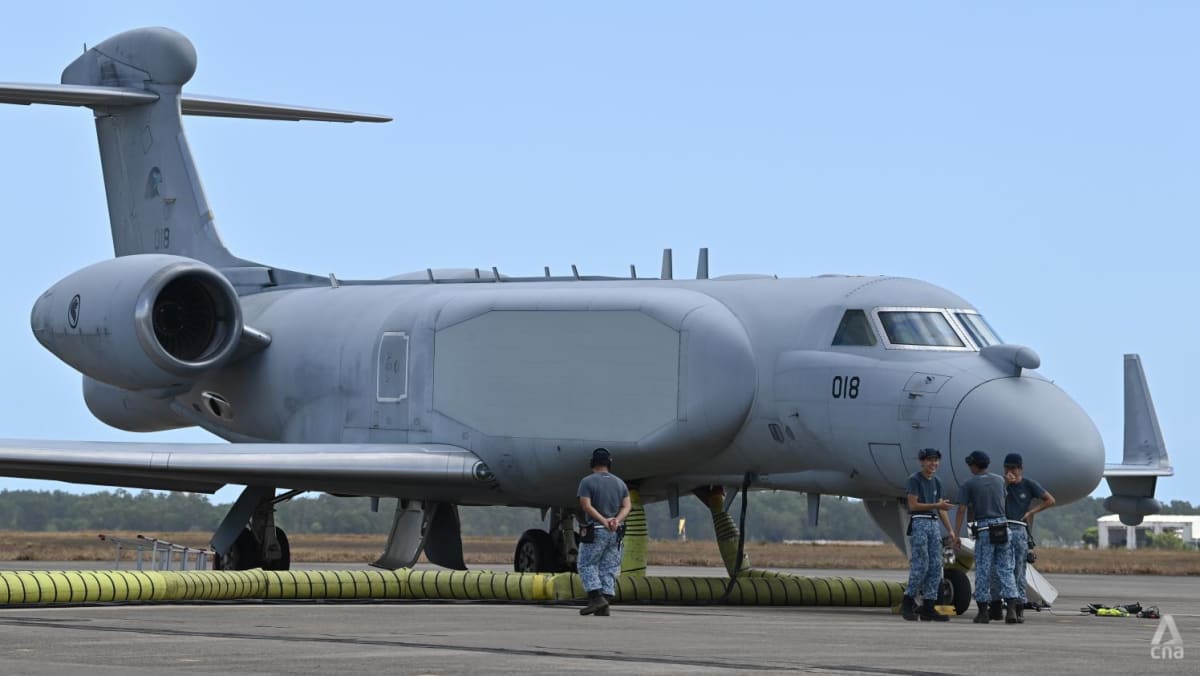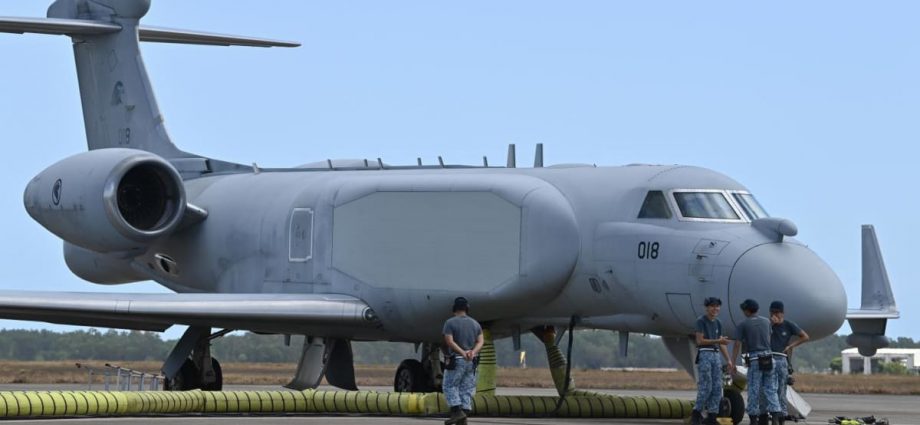
TRAINING JUNIOR OFFICERS
CPT Selvan said the sheer number of aircraft involved means the skills of all the air warfare officers onboard are tested to the limit. “We exercise our full competency,” he said. “It’s a very exciting experience.”
There are six such officers to ensure that nothing slips under the radar.
“While airborne surveillance might sound like a one-person job, we have to manage the airborne systems and sensors on board. So, we do need the full suite of operators,” he said. “You don’t want to miss out anything … you don’t want a single point of failure.”
CPT Selvan also trains newer air warfare officers during flights. He focuses on one officer to give them fuller attention, with the aim of getting them as competent and efficient as possible.
“Obviously when you first start learning about surveillance, your capacity is limited in terms of utilising the sensors and resources on board to detect the aircraft,” he said.
“As you get more competent, you are able to do that role much quicker and more efficiently. If you want to mount the earlier response, you want them to be competent enough to detect those guys earlier to allow our fighter jets to respond to those guys quicker.”

